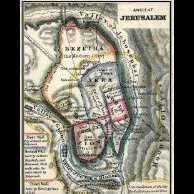-
Recently Browsing 0 members
- No registered users viewing this page.
Announcements
-
Topics
-
Latest posts...
-
23
Sunday roast dinners
Yeah, agree. The pubs are generally fine but this was another level up in quality, especially of the meat and gravy. But yes, you do have to pay for it. Even though 750 was not cheap I think it was worth the premium. Unlikely I'll be back any time soon as it is across town from where I live, but if I was in that area I would definitely drop in. FWIW we also ate beef tartare, pan fried scallops, six NZ oysters, a pizza, pan fried salmon, a wild prawn risotto and a couple of desserts (pavlova and sticky date pudding). All superb. And the service was good too - they gave us one of our desserts for free when they heard it was my daughter's birthday. -
0
Re entry permit
what is required for a re entry permit these days. It will be the first time I've left in years. -
42
British National Killed in Sattahip Motorcycle Accident
Yeah, but what about the signs and the poles? -
258
Is Thailand Value for money
Well, that's the thing about them Walking St. pizzas. You got to bring your own cheese. Then what you do is request NO CRUST as you hand over your cheese for them to mix in a bowl with the other ingredients. Presto! Yer healthy Walking St. pizza. -
72
Save The Children Urges Action on Child Road Deaths in Thailand
Is that a fact! Gosh, I was sure they were doing a pressure test. Maybe the wife mistranslated when the station worker explained. Oh, well. In that case, absolutely no blame can go on the inspectors if they just have to spray some soapy water on the couplings. Looks good! -
258
Is Thailand Value for money
Perhaps you missed @fredwiggy clownish pronouncements of me not knowing anything about nutrition, with him being the preeminent reference for all things nutritional. He neglected to ask and instead assumed he knew best. Just like his foolish claims that NY pizza, shrimp scampi and cheese burgers are healthy foodstuffs. Equally ridiculous, was your agreeing with him. 😊 I trained for both. -
258
Is Thailand Value for money
https://en.m.wikipedia.org/wiki/List_of_countries_by_number_of_millionaires Most of the wealth of these millionaires is tied to their home, illiquid asset, so the majority of these millionaires need to stay where they are, and pay "millionaires" prices for everything. For example if 5% of these millionaires try to sell their house and move somewhere else, they may find that they are not millionaires anymore, as the house prices will plummet, as there are not enough millionaires to buy them. -
44
Urine infection
If urine was so good for the body, then why does the body excrete it? -
72
Save The Children Urges Action on Child Road Deaths in Thailand
Looking at the standards for nvg vehicle its ALL Visual inspections the only Pressure test is when its installed so i don't know How u get a pressure test every year think you a bit of Bull Shxx and it is a comprehensive visual inspection of each joint you need to read the Inspection standards before giving bull -
-
8
Florida is nearing toss-up status as top Republican poll shows Trump’s lead nearly vanished
That's the point. I know I would not be satisfied with just a win. I want it to really hurt. -
42
British National Killed in Sattahip Motorcycle Accident
66 year in combination with kawasaki Z900. Further explanations are completely superfluous... -
272
What is the tipping practice in Thailand ?
it's what's everybody gets on top of their salary for that month, hence usually a big party and funfare when they announce what the amount will be, mind y ou the lowest employee like cleaners might only get 9,000-11,000 baht per month only, and in the low season and low occupancy periods the figures won't be this high -
23
Sunday roast dinners
Had Christmas lunch there a couple of years ago, so basically a Sunday lunch, superb, a different league from the pubs mentioned, although you get what you pay for and the pubs also do a fine job up to a point.- 1
-

-
87
Trump Urges Israel to Strike Iran’s Nuclear Facilities
Do explain then . I think that's its correct to presume that bombing a factory will hinder that factory from making things , its quite obvious really
-
.png.3b3332cc2256ad0edbc2fe9404feeef0.png)


.thumb.jpg.b54783ad387f65d779e04f535fcfeee9.jpg)









Recommended Posts
Create an account or sign in to comment
You need to be a member in order to leave a comment
Create an account
Sign up for a new account in our community. It's easy!
Register a new accountSign in
Already have an account? Sign in here.
Sign In Now